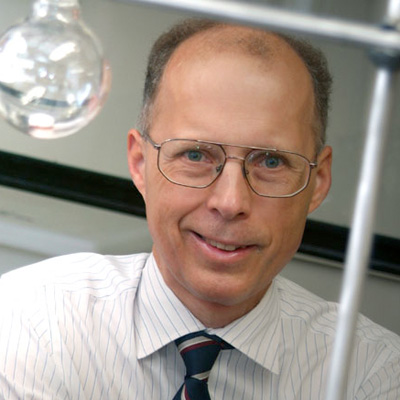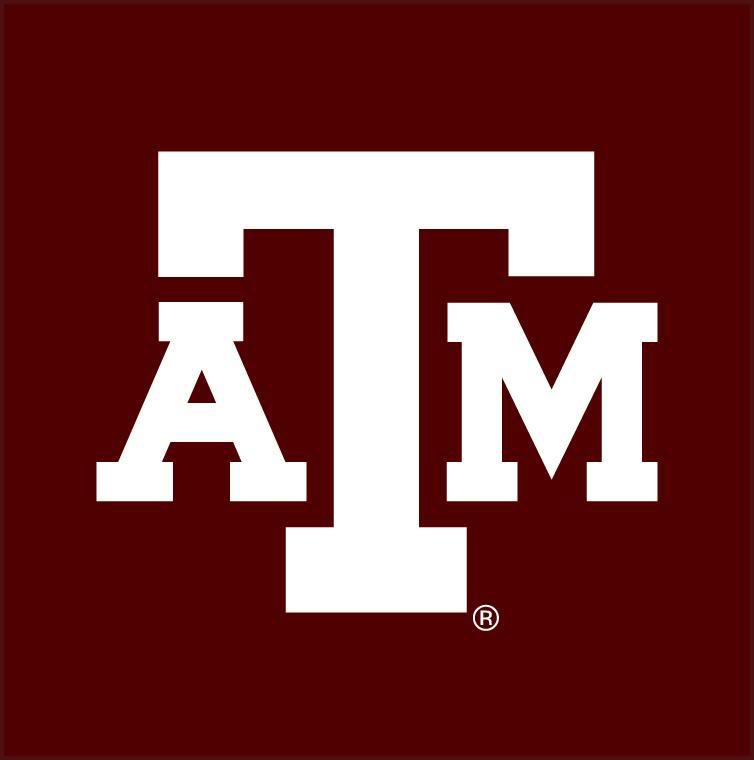Collaborative research reaches all areas of translational chemistry
Chemical invention has fueled innovation for centuries; it is responsible for developments in medicine, agricultural practices, household materials, and civil defense strategies. Dr. John Gladysz, Distinguished Professor and Dow Chair of Chemical Invention at Texas A&M University, studies organometallic chemistry as a tool for developing a broad range of applications that can impact society, from the individual to industrial levels. His expertise branches into catalysis, organic synthesis, enantioselective reactions, stereochemistry, mechanism, and materials chemistry. Thus, the impact of his research spans the fields of medicine, specifically drug synthesis, energy, including fuels and catalysis, nanotechnology, where he crafts molecular level devices into machines and circuits, and green or environmentally friendly processes.
Dr. Gladysz is a team oriented scientist, as evidenced by the 15% of his approximately 400 publications that represent collaborative projects. Collaborations facilitate broad research agendas that maintain academic rigor and maximize the chances of impressive translational work. Typically, Dr. Gladysz works with 16 postdoctorals and graduate students throughout the year; this large group of aspiring academics is characterized by great diversity, typically a 50:50 mix of North American and other nationalities. In fact, many of his coworkers have returned to their homes abroad and initiated successful careers in countries in need of well-trained scientists. Whether working with students, collaborators, or on his own, Dr. Gladysz is known for his attention to detail and rigor. Through the combination of insights from the parent disciplines of organometallic chemistry (organic and inorganic chemistry), and allied subdisciplines, his research evidences an uncommon breadth with all of the attendant applications and implications!
Current research includes:
-
Synthesis of Chemical Substances: Dr. Gladysz is developing new methods for the synthesis of pharmaceuticals and agricultural chemicals. Specifically, he seeks economical new routes to those that have “handedness” or are not mirror images of one another. Usually only one handed form elicits the desired response; the other can in fact be toxic. Dr. Gladysz’s research is likely to affect pain medications, antibiotics, anti-cancer agents, and chemicals used to control agricultural pests.
-
Green Chemistry: Dr. Gladysz endeavors to develop more sustainable chemical technologies by strategizing creative new ways to recycle catalysts and reagents instead of disposing of them after each use. The more chemicals that can be reused, the more efficient and environmentally friendly the process, not to mention the much more favorable cost and sustainability implications.
-
Energy: Dr. Gladysz has been addressing problems in energy and fuel conversion for forty years. For example, methane, or natural gas, is often found in remote sites in northern Alaska and the Middle East. Many times, it is wastefully “flared off” in part because it is so difficult and dangerous to transport. Dr. Gladysz and his team seek ways to efficiently convert methane to easily transportable liquid fuels, something for which only inefficient technology is available today.
- Molecular-Level Nanodevices: Everyone with a modern smartphone knows that rotating the phone also rotates the display on the screen. This is due to a tiny gyroscope that senses orientation. Dr. Gladysz is developing similar technologies on the molecular-level for nanodevices. For example, a molecular gyroscope would represent the ultimate in miniaturization, paving the way for millimeter sized drones and robotics.
Bio
As a student at the University of Michigan in the 1970’s, Dr. Gladysz found that there were extensive opportunities available to him as an undergraduate chemistry major. Those who were motivated could get a lab bench just like the graduate students and “live in the lab.” Dr. Gladysz chose to immerse himself in graduate chemistry courses like his more advanced lab mates, and thus propelled himself towards a lifetime career in the sciences.
Research has allowed Dr. Gladysz to challenge himself and, apropos to his University home base, continue to learn new and exciting ways to view the world. He regularly tries to incorporate new subjects and topics into his research in order to meet today’s demand for broad training. At the same time, he views research as a cornerstone in training tomorrow’s leaders and scientists. Dr. Gladysz feels it is “important to learn rigor in the laboratory and to be able to think critically.” More than anything, he is motivated to do research because of the desire to engage with his community and to impact it for the better.
Dr. Gladysz’s deep concern for connecting with the research community has culminated in extensive collaborations, including ten years as a Professor in Germany. While in Germany, he challenged himself to learn the language and work and teach within the new culture to gain perspective and produce scientific contributions with a broader resonance..
In his free time, aside from research, Dr. Gladysz gets outdoors as much as possible, and is still a runner after all these years. In fact, he and his chemist wife often work out together; Dr. Gladysz will run alongside his wife, who commands the cockpit of their tandem bike, in one direction, and then they enjoy riding together on the way back home. Another life-long avocation has been literature. He continues to be inspired by his late mother, who was the author of Spy on the Bus, a personal account of her experience as an 18-21 year old industrial secret agent. Whether running, cycling, or reading, you can often find Dr. Gladysz on his 81 acre ranch, only 15 minutes from the chemistry building.


